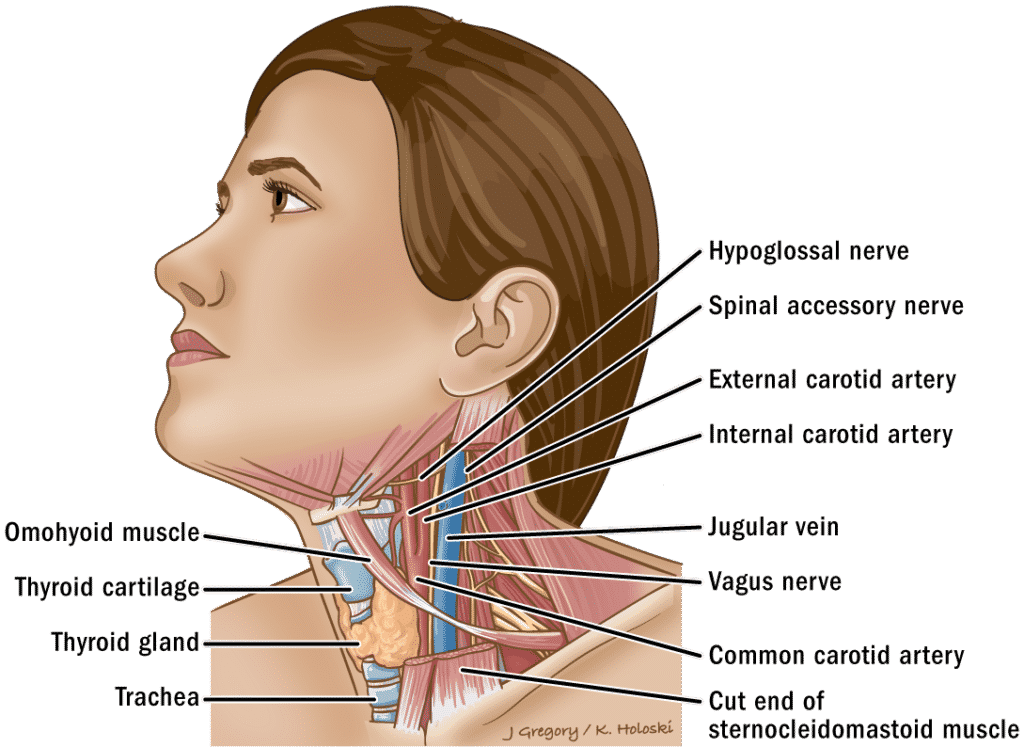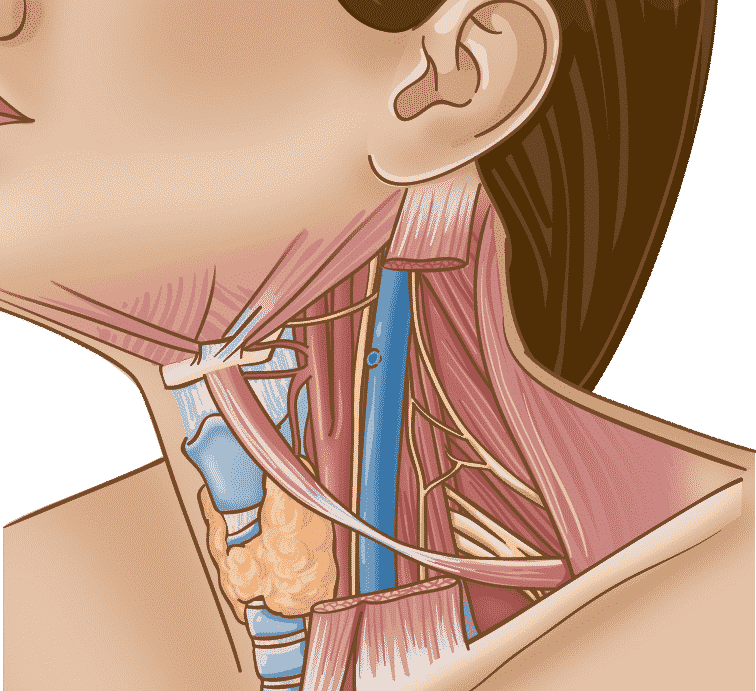What & Where are Neck Cancers?
Primary neck cancers include a variety of different cancers that occur in the neck.
The neck is a complex anatomic region that is essentially a passageway for air, food, liquids, blood, and more to travel between the head and the rest of the body. Neck cancer is not a specific type of cancer, but rather, a location where multiple different types of cancer can occur.
The most common sign of neck cancer is finding a lump in the neck. To figure out if it’s cancer, you’ll need a doctor to check it, get some imaging tests, and do a biopsy. This helps decide what kind of cancer it is and how to treat it. The treatment can vary, but it usually includes surgery, radiation, and chemotherapy.
Neck Anatomy
Understanding neck cancers starts with knowing about the neck’s structure and what it does. The neck connects the head to the body, stretching from the lower jaw down to the chest and shoulders, and has lots of muscles and the spine at the back.

Causes, Signs & Symptoms
Common Causes of Neck Cancer
Radiation
Prior radiation treatment for previous cancer can increase the chance of developing a sarcoma.
Viruses & Immunodeficiencies
These conditions have been associated with sarcomas or lymphomas in the neck.
Genetic Factors
Genetic factors may raise the risk for neck cancers, including diverse types like sarcomas and lymphomas, based on the specific primary cancer type. This area encompasses multiple cancers, influenced by both genetics and the cancer’s nature.
Cancers That Metastasize to the Neck
Several different types of cancers may begin outside of the neck and spread (or metastasize) to the neck.
Metastatic Lymph Nodes
Cancers that spread from another site to the lymph nodes in the neck.
Thyroid Cancer
Salivary Gland Cancer
Skin Cancers
Lymphoma in the neck often manifests differently, with patients usually younger and symptoms extending beyond the typical neck mass to include fevers, chills, night sweats, fatigue, weight loss, and enlarged lymph nodes.
Signs & Symptoms
- A lump in the neck.
- A suspicious mass in the neck (discovered by imaging the area).
Additional Symptoms
- Neck pain.
- Skin changes or ulceration over a neck lump.
- Shoulder weakness.
- Neck numbness.
- Voice changes.
- Difficulty swallowing.
- Limited neck range of motion.
Diagnosis
Cancer in the neck is typically found in one of two ways: a patient or their doctor notices a lump in the neck, or an imaging study for an unrelated reason identifies a mass in the neck that looks suspicious and requires further evaluation.
Further testing will be necessary to confirm a diagnosis of neck cancer and determine the best course of treatment. Patients can expect their doctor to discuss the risks, benefits, and alternatives to imaging, serology and having a biopsy. Imaging and biopsy are the standard diagnostic approaches.
Type, Grade & Stage
After diagnosing a patient with neck cancer, a doctor will need to determine what type of cancer it is, the grade of the tumor (i.e. the risk level), and the stage of the cancer based on a biopsy or pathology after surgery.
The best way to classify neck cancers is to determine if it has spread from another site (metastatic cancer), or if it is a cancer that started in the neck (primary neck cancer).
Treatment Plan
After determining a diagnosis and completing a full pre-treatment evaluation, doctors will recommend a course of treatment for their patients. Treatment for primary neck cancer usually involves doctors in multiple different specialties.
In general, there are 3 different options for the treatment of neck cancer that can be used alone or in combination: surgery, radiation and chemotherapy.
Prognosis
A prognosis is a prediction of the outcome of one’s disease. How likely is survival? Will the cancer come back? These are the big questions on most people’s minds after receiving a diagnosis of neck cancer.
In general, there are 4 tumor characteristics that can inform a patient about their chances of being cured: the stage, the site, the type & grade and the tumor margins.
What to Expect After Treatment
After treatment, patients should follow-up with their doctors on a regular basis.
Patients should visit their head and neck specialist on a regular schedule (or earlier if they have any concerning symptoms). This allows doctors to monitor the patient for any sign that the cancer has returned. The best timeline for follow-up will be determined by the doctor.












